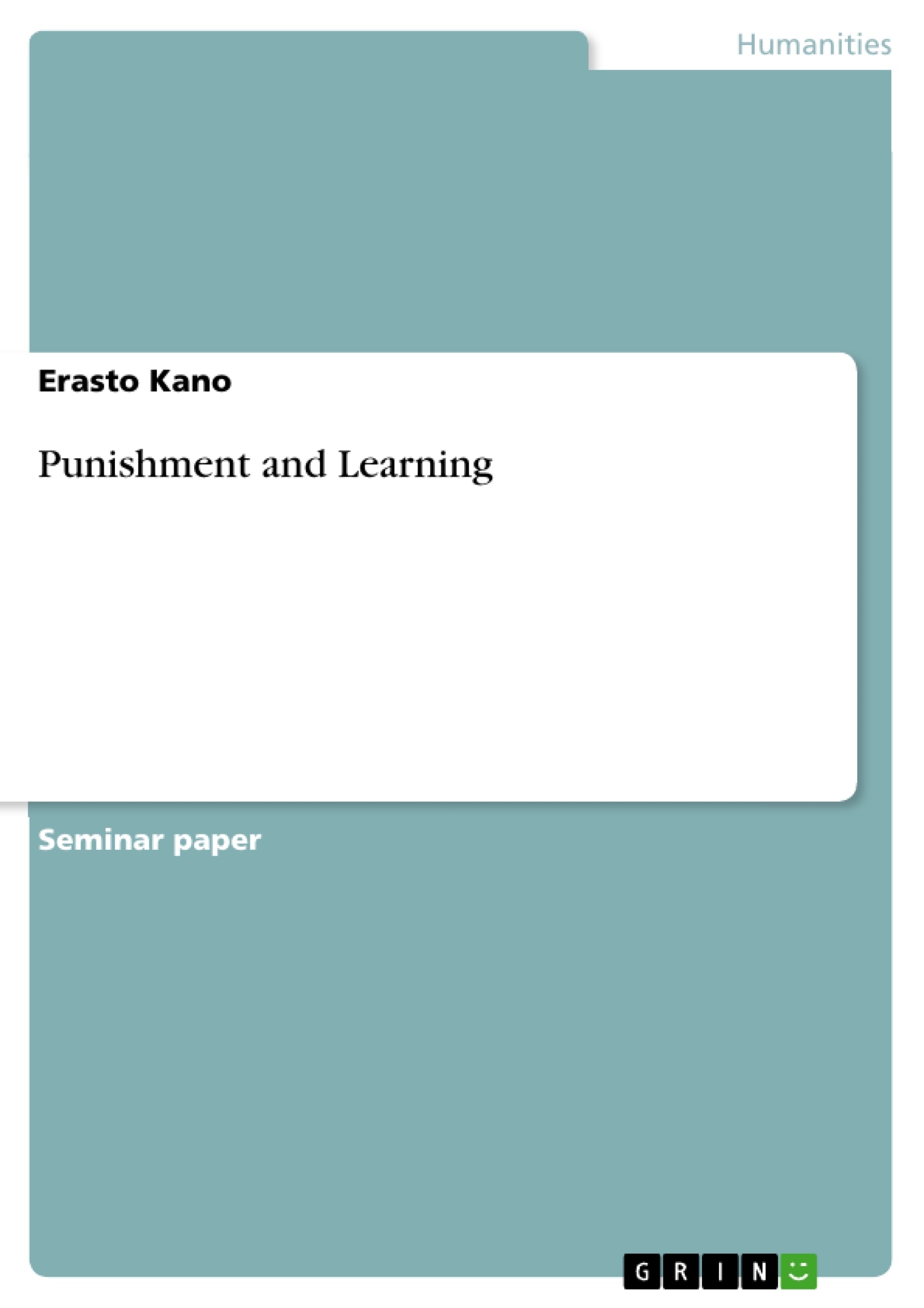Abstract
This paper intends to discuss the issue concerning punishment and learning in the classroom situation especially in Tanzanian context. The paper presents learning theories in relation to punishment, types of punishment, forms of punishment, arguments for the use of punishment in schools, arguments against the use of punishment in schools, impacts of punishment on those inflicted, guidelines for the use of punishment, alternatives to punishment, challenges which face the prohibition of punishment and the recommendations.
Table of Contents
- Abstract
- Introduction
- Punishment
- Learning Theories and Punishment
Objectives and Key Themes
This paper aims to examine the use of punishment in Tanzanian classrooms, exploring its relationship to learning theories, its various forms, arguments for and against its use, and its impact on students. It also proposes alternatives to punishment and addresses challenges to its prohibition.
- The relationship between punishment and learning in the classroom.
- Different types and forms of punishment used in schools.
- The arguments for and against the use of punishment in education.
- The impact of punishment on students' behavior and well-being.
- Alternatives to punishment and challenges to its prohibition.
Chapter Summaries
Abstract: This abstract provides a brief overview of the paper's intention to discuss punishment and learning in Tanzanian classrooms. It mentions the paper's scope, encompassing learning theories related to punishment, types and forms of punishment, arguments for and against its use, impacts, guidelines, alternatives, and challenges to its prohibition.
Introduction: The introduction establishes the widespread use of punishment in schools globally and particularly in Tanzania. It highlights the controversy surrounding punishment's efficacy and questions the underlying justifications for its use. The introduction sets the stage for a critical analysis of the role and impact of punishment within the educational system, emphasizing the need for a deeper understanding of its implications.
Punishment: This section delves into the definition and various forms of punishment. It distinguishes between corporal punishment (involving physical pain) and other forms such as suspension, detention, and removal of privileges. The section details types of misbehavior that often warrant punishment and explores contrasting views on punishment's effectiveness, weighing arguments for and against its implementation in schools. It highlights the potential negative consequences, such as fostering hatred towards school and learning, and promotes violence as a problem-solving method.
Learning Theories and Punishment: This section connects the concept of punishment to behaviorist learning theories, tracing its roots back to the works of Pavlov, Thorndike, and Skinner. It emphasizes the behaviorist perspective that actions followed by pain will be avoided, while actions leading to pleasure will be repeated. This section subtly suggests a critique of the simplistic application of behaviorist principles to the complex realm of education and student behavior.
Keywords
Punishment, learning, education, Tanzania, corporal punishment, behaviorism, learning theories, classroom management, alternatives to punishment, student behavior.
Frequently Asked Questions: A Comprehensive Language Preview on Punishment and Learning in Tanzanian Classrooms
What is the main topic of this document?
This document provides a comprehensive overview of the use of punishment in Tanzanian classrooms. It explores the relationship between punishment and learning theories, examines different forms of punishment, analyzes arguments for and against its use, and discusses its impact on students. The document also proposes alternatives to punishment and addresses the challenges involved in its prohibition.
What are the key themes explored in this document?
The key themes include the relationship between punishment and learning; different types and forms of punishment used in schools; arguments for and against the use of punishment in education; the impact of punishment on students' behavior and well-being; and alternatives to punishment and the challenges to its prohibition.
What is covered in the "Punishment" chapter?
This chapter defines and categorizes various forms of punishment, distinguishing between corporal punishment and other methods like suspension or detention. It details common misbehaviors leading to punishment and presents contrasting viewpoints on its effectiveness, highlighting potential negative consequences such as fostering resentment towards school and promoting violence.
How does the document relate punishment to learning theories?
The document connects the concept of punishment to behaviorist learning theories, referencing the work of Pavlov, Thorndike, and Skinner. It explains the behaviorist perspective that actions followed by pain will be avoided, while actions leading to pleasure will be repeated. However, it subtly critiques the simplistic application of these principles to the complex reality of education and student behavior.
What are the objectives of this paper?
The paper aims to examine the use of punishment in Tanzanian classrooms, exploring its relationship to learning theories, its various forms, arguments for and against its use, and its impact on students. It also proposes alternatives to punishment and addresses challenges to its prohibition.
What are the chapter summaries included in this preview?
The preview includes summaries of the Abstract, Introduction, Punishment, and Learning Theories and Punishment chapters. Each summary briefly outlines the main points and arguments presented in the corresponding chapter.
What are the keywords associated with this document?
The keywords are: Punishment, learning, education, Tanzania, corporal punishment, behaviorism, learning theories, classroom management, alternatives to punishment, student behavior.
What is included in the table of contents?
The table of contents includes: Abstract, Introduction, Punishment, and Learning Theories and Punishment.
What is the overall approach of the document?
The document takes a critical and analytical approach, examining the multifaceted issue of punishment in education. It aims to provide a balanced perspective, considering various viewpoints and proposing solutions.
Who is the intended audience for this document?
While not explicitly stated, the intended audience appears to be academics and researchers interested in education, classroom management, and the impact of punishment on student learning and well-being, particularly within the Tanzanian context.
- Quote paper
- Erasto Kano (Author), 2012, Punishment and Learning, Munich, GRIN Verlag, https://www.grin.com/document/191323



